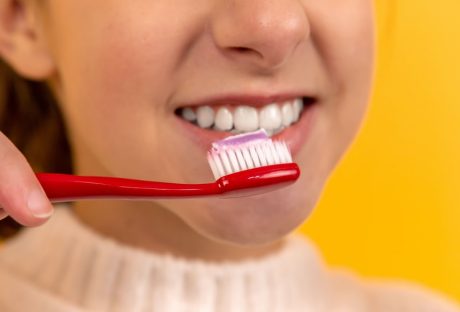The Vancouver Paramedical Clinic ― scalp micropigmentation training is one of the leading training programs for one of the fastest growing careers in North America. With a client base numbering a least 50 million by conservative estimates, this should come as no surprise. Scalp micropigmentation (SMP) is a procedure that is quickly becoming one of the most preferred hair loss solutions for men. SMP also works for women who are suffering hair loss due to hormonal issues and those who are suffering from medical conditions.
So, what exactly is scalp micropigmentation and what is in it for you? If you are one of the millions of balding men in North America, here’s everything you need to know about SMP. More than restore your youthful looks, you may even consider a career in this burgeoning industry that experts predict to continue to grow for the next 10 years.
Scalp Micropigmentation:
Scalp micropigmentation is a treatment that gives balding scalps the appearance of having tiny hair follicles. When done correctly, a bald spot will look more like it has been closely cropped or shaved. This non-invasive treatment is ideal for restoring receding hairlines, make hair look fuller for women with bald spots and even hide scars from hair transplant procedures. Those with thinning hair can also benefit from this treatment as skilled SMP technicians (also called artists) can give you the look of having a thicker head of hair. SMP can also help those who are suffering from alopecia, a medical condition characterized by hair loss and patients undergoing chemotherapy.
There are several reasons why SMP better than other hair loss solutions. Scalp micropigmentation treatment can be completed within a matter of hours. Depending on how dark you want your SMP follicles to appear, you may need one or two more treatments to refine the initial treatment. Once you are done, you won’t need any medications, and your treated scalp will require little to no maintenance at all.
Apart from restoring hairlines and hiding bald spots, scalp micropigmentation can also hide scarring on the scalp. A large number of those seeking SMP treatment usually do so to camouflage scalp damage due to strip and follicular unit transplant (FUT)/follicular unit excision (FUE) scarring that inevitably appears after hair transplant treatments. Skilled SMP technicians can also use various techniques to hide accident and alopecia scars, marks left by head acne and bumps from hair plugs.
Scalp Micropigmentation vs. Hair Tattoo:
While there are similarities between scalp micropigmentation and tattooing, these are two completely different disciplines. For one, SMP treatments require specialized equipment designed just for the procedure, which likewise require specialized training to use. Here are the major differences between SMP and tattooing:
- SMP clinics: Scalp micropigmentation treatments take place in a clinic as opposed to tattoo parlors. These treatment environments are sanitary and are compliant with workplace safety and biohazard requirements. SMP clinics ideally should also have surgical lighting as well as loupes that will enable the technicians to make more detailed needle strokes.
- SMP artists: Unlike tattoo artists, SMP technicians employ advanced techniques that are completely different to that used by a tattoo artist. SMP techs know exactly the type of settings and needles required for a specific scalp as well as the density and pigment of the ink to be deposited on the scalp.
- Medical grade pigments: Tattoo artists use ink. SMP treatments, on the other hand, use medical grade pigments that are specially made for the scalp. Such pigments are designed to remain unaffected by the natural oils on the scalp. The pigments are also hypoallergenic and resistant to fading.
If you are considering an SMP treatment, it will be in your best interest to avoid tattoo parlors that are offering “hair tattooing.” Do yourself a favor by going directly to SMP technicians and save yourself the trouble of wearing a scalp with a botched hair tattoo.
Scalp Micropigmentation Training:
As popular as scalp micropigmentation has become in recent years, experts still predict the industry to grow even more within the next decade at least. This is because male pattern baldness continues to affect millions of males in North America alone, and there is no cure for this condition currently. Because it is a quick, convenient and safe alternative to surgery, scalp micropigmentation should continue to win proponents in the years to come.
With the present cost of a regular SMP treatment, it may interest you to know that an SMP technician can earn on the upward of $300,000 annually at two clients a week. This should dispel any doubts from those who mistakenly think that the cost of SMP training is too high.
What Is Involved in Scalp Micropigmentation Training?
The training institution mentioned at the start of this article offers a five-day course with intensive hands-on training, along with comprehensive classroom lectures. The course covers color theory and skin pigment basics, hands-on equipment training on a live model, clinic set up and advice on the business and marketing aspect of SMP. Here’s what a five-day training course looks like:
- Day 1: Intro to SMP, pigments and color matching, pain control, skin structure, demo on the latest gear, basic procedure, needle positioning, and hands-on practice.
- Day 2: Dealing with pigment allergies, post-treatment care, and management, stroke correction, hiding scalp scars, consultation basics, forms and releases needed for your clinics, medical records, workplace safety and clinic sanitation, equipment sterilization, and hygiene.
- Day 3: Protective gear, preventing cross-contamination, pigment migration, more workplace safety tips, hands-on equipment training on a live model and making pigment corrections.
- Day 4: Pointillism techniques, hair replication strokes, equipment familiarization and maintenance, techniques, marketing and more hands-on treatment on a live model.
- Day 5: Hiding scars, scar pigment correction, blending, hair stroke techniques, needling, color mixing hair replication tricks and hands-on training.
As more hairlines continue to recede in the coming years, the demand for more SMP technicians will increase even more. There is a current shortage of SMP artists, and this may be your chance to embark on a new and more financially rewarding career. If you think you have what it takes to become an SMP technician, enrolling in a comprehensive workshop offered by a reputable institution would be a good place to start.
Read Also:
























